Ever since cheese has existed, humans have had to devise methods of keeping it safe and delicious to eat for as long as possible. But good packaging must do more than protect cheese from outside contaminants and keep it clean.
It also needs to hold in sufficient humidity to preserve the cheese’s texture, flavor, and microflora, while also allowing the cheese to “breathe” so that moisture doesn’t build up and damage the product or allow unwanted molds to develop. And, of course, it should extend a cheese’s shelf life so that it’s good to eat for as long as possible.
Here’s a look at how humans have stored cheese throughout the ages, from vessels bringing cheese to far-off lands in the ancient world to your friendly neighborhood monger wrapping up a freshly cut wedge for you to take home.
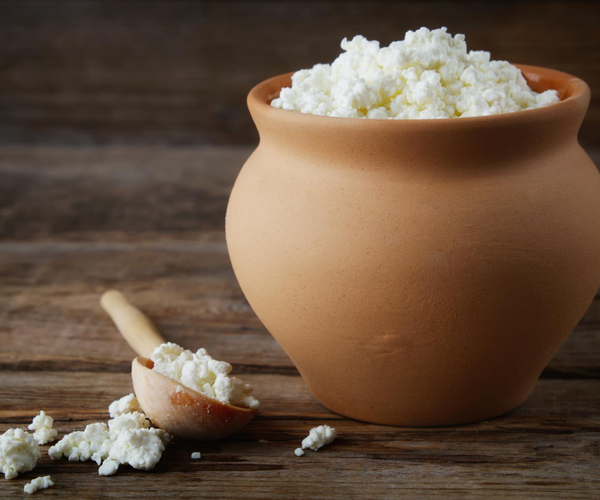
Clay Pots
Before cheese could be made, humans in Neolithic civilizations had to hit on another important discovery.
The ability to create durable ceramic vessels created not only the earliest cheese storage method, but also important cheesemaking equipment: clay pots could be used to collect and culture milk, then ceramic strainers, bowls dotted with holes, allowed whey to drain away from the coagulated curd.
Pots could be used to store and preserve cheeses, either by packing small wheels in salt or submerging them in a salty brine. These durable, long-lasting storage containers could even be buried underground to protect them from spoilage in hot climates, thereby extending their shelf life further.
Throughout the Bronze Age, as cheesemaking cultures in the Levant began to trade with other groups throughout the Western Mediterranean, wheels of hard, natural-rinded aged cheeses were packed into ceramic vessels before being carried to new markets by sea.
Later, cheesemakers in England and the United States would begin wrapping cheese wheels in...
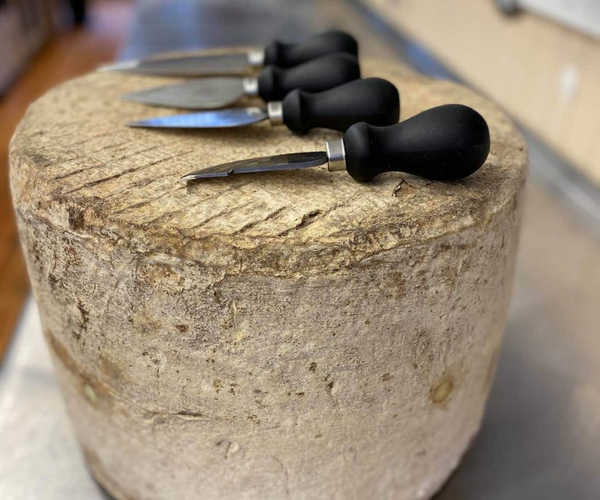
Above: Old Brooklyn Cheese's Clothbound Lake Erie Breakwall
Cloth
It’s thought that 18th-century cheesemakers in the United States, where temperatures were hotter than in the cheese’s native England, began to rub Cheddar-style wheels of cheese with lard or melted butter to help seal a protective coating around the cheese to prevent moisture loss.
Starting in the early 19th century, on both sides of the Atlantic, strips of muslin were soaked first in animal fat before being wrapped tightly around wheels of cheese. This held in moisture better and allowed intriguing molds to grow on the cloth without damaging the rind beneath.
Later, cheesemakers would achieve a similar effect by encasing cheeses in...
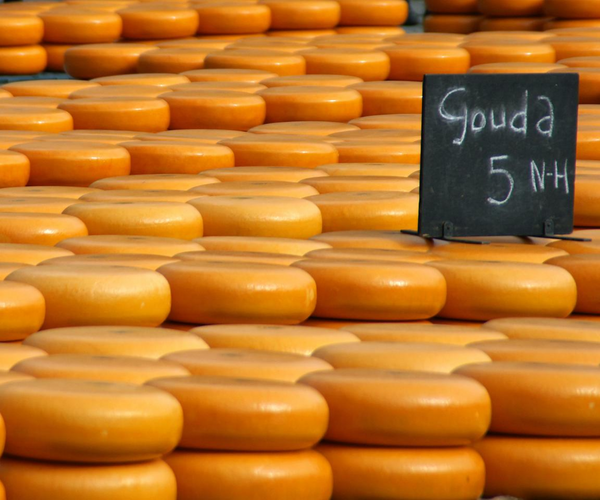
Wax
No variety better exemplifies Dutch cheesemakers’ innovations in marketing, packaging, and storage in the late Middle Ages and early Renaissance than Edam, whose signature spherical shape and wax coating made it easy to load into barrels for export all over the world, maximizing space and minimizing the risk of chipped edges.
Originally, the cheese was rubbed with a natural dye to harden the rind and turn it bright red. By the end of the 19th century, cheeses like Edam and Gouda were dipped in colorful wax before aging to better protect the cheese, slow moisture loss, and give wheels a distinctive look.
Of course, once a monger cuts into that cheese for a customer, it must be wrapped for retail sale. Which brings us to…
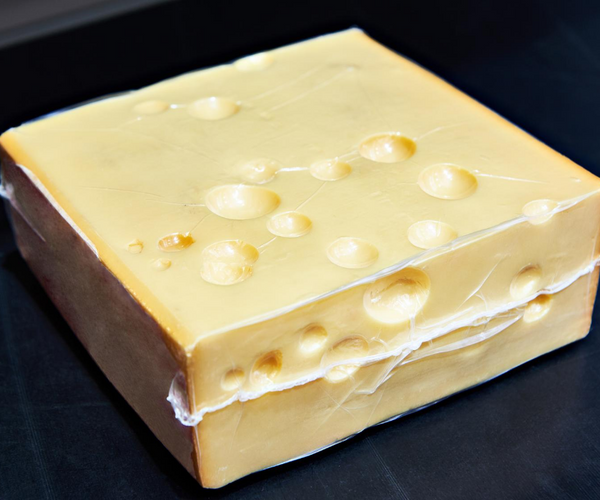
Plastic
When it was invented in 1949, plastic wrap was touted as a revolutionary way to keep food fresh, and it’s become essential for protecting and preserving foods along the supply chain. This often includes cheeses—typically commodity types like vacuum-sealed block cheddar or bags of pre-shredded mozzarella, but sometimes artisan varieties that are distributed on a large scale.
Some fresh, high-moisture cheeses—like mozzarella or feta in brine, spreadable types like chevre, or sturdy cheddar curds—are just fine to spend their relatively short shelf lives in a plastic bag, pouch, or tub in your fridge, no harm done.
But bloomy rind, washed rind, and hard aged cheeses are another story. Since it’s not breathable, plastic effectively mummifies cheese, stifling its microflora and degrading flavors and aromas over time. The light that shines through clear plastic packaging has also been shown to allow oxidation of the cut surfaces of cheeses, creating off-flavors that must be removed before eating.
If you do have to buy your cheese in plastic wrap, it’s a good idea to give it a gentle scrape on the cut sides with a knife, then transfer it to packaging that will let the cheese breathe. One of these options is...
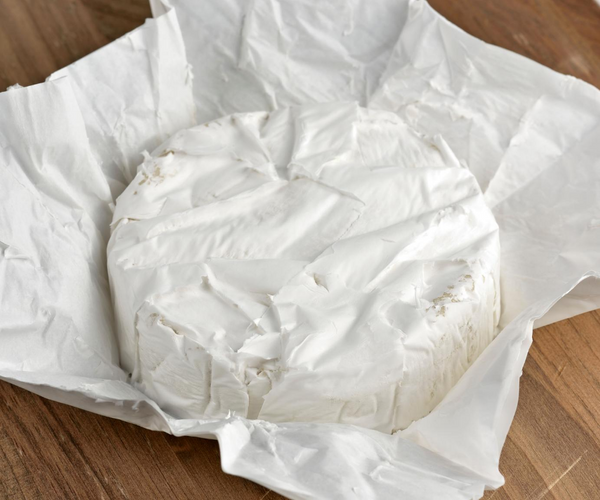
Cheese Paper
This is the wrapping you’ll find at most fine cheese shops. Cheese paper is a composite material made from paper, typically coated in wax, on the outside. That layer is fused with a porous plastic inner layer that touches the cheese.
Cheese paper has become standard for a reason: it does what it needs to do pretty well. Those tiny holes in cheese paper are key for allowing air exchange, which holds in enough humidity to keep the cheese tasting fresh while allowing excess moisture and gases emitted by the cheese to escape.
But cheese paper for home use is pricey, and the cost of this non-renewable material can really add up over time. Plus, why waste paper and plastic—which, as a composite material, can’t be recycled—when there are better, more sustainable ways to store cheese and keep it fresh and flavorful? Such as…
The Cheese Grotto
What could be a better cheese storage method than creating the conditions of a cheese cave at home? The Cheese Grotto is a sturdy, beautiful, and sustainable option for storing all your favorite wedges and wheels. They’ll last longer, smell amazing, and taste as good as the day you brought them home.
The Cheese Grotto protects your cheeses from drying drafts, off aromas, and outside contaminants, whether French-style on your kitchen counter or in your refrigerator. Its handmade wood construction is inspired by traditions of home storage before the advent of refrigeration and allows your cheeses to breathe. All you have to do to create the perfect level of humidity in your Grotto is periodically soak the clay brick in water. Thanks to the front glass panel, you can always see what’s going on with your cheeses—which is especially convenient when you want to age your own Camembert or ripen some funky little goat crottins.
With a versatile home cheese storage method like the Cheese Grotto, there’s no waste—no trash from wrappings that can’t be recycled or composted, and no cheese that’s gone past its prime because of improper storage. It’s easy to clean and care for, and there are four different sizes to fit any kitchen and any cheese habit, from our new, petite Piatto to the roomy Classico. As a bonus, you can even turn the Grotto’s wooden shelves into mini cheese boards—something cheese paper will never be able to do.
What are your favorite ways to keep cheeses fresh in your home? Let us know! And you can read more about how happy cheese lovers use their Grottos here.
Stay tuned for the next installment in our History of Cheese series, Part 4: Cheese and the New World!
Sources:
The Oxford Companion to Cheese, ed. Catherine Donnelly
Cheese and Culture, Paul Kinstedt
The sticky problem of plastic wrap, National Geographic

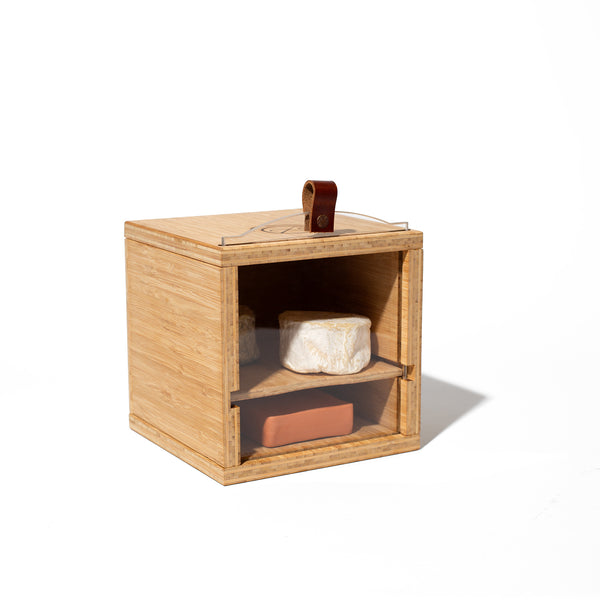
Leave a comment